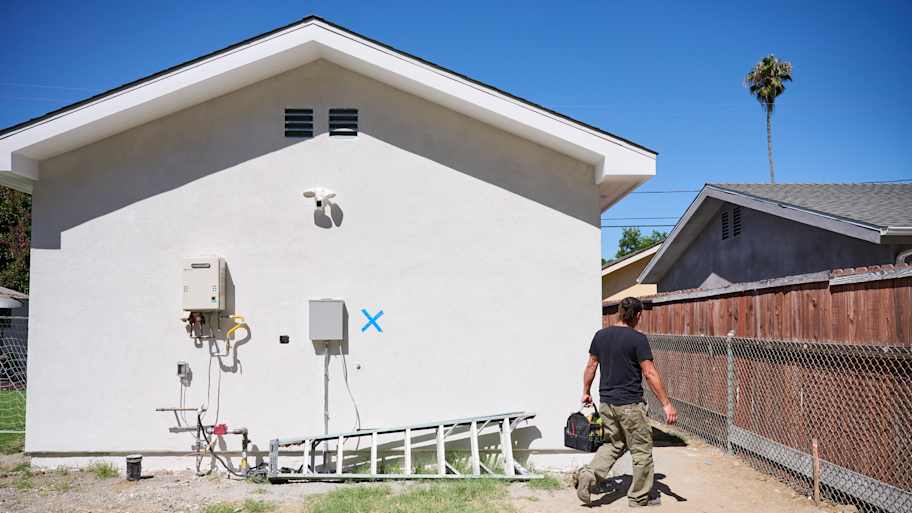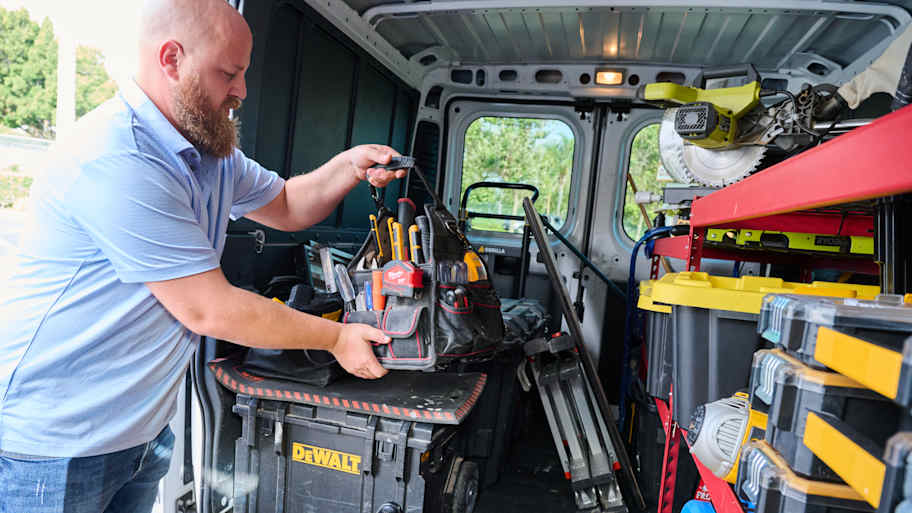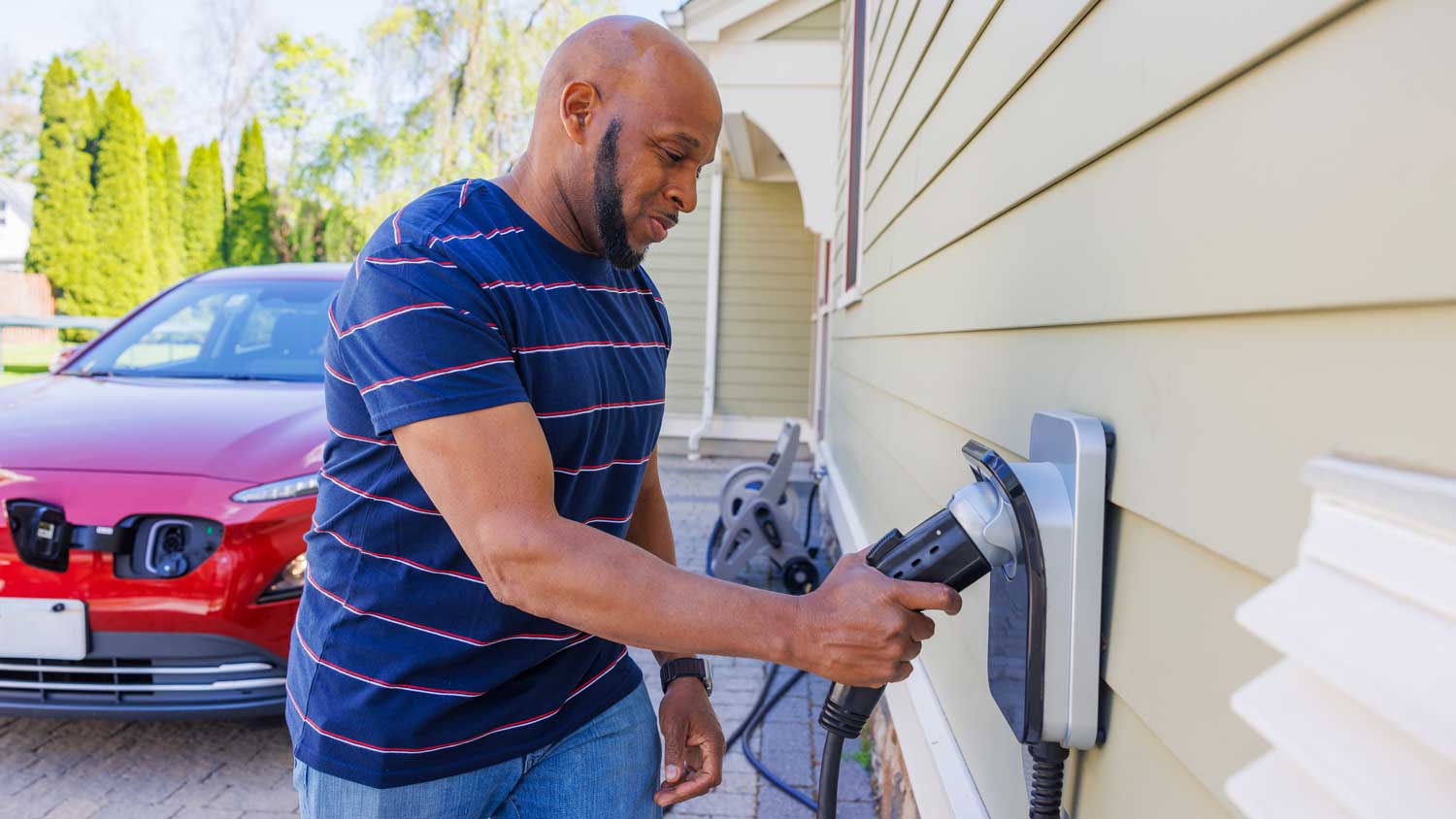How to Tell What Amp Service Is in Your House
Never be in the dark about your home’s max electrical power


Your home’s amp service measures the total power you can use.
With more amps, you can simultaneously run more appliances.
Your amp service number is often visible in the breaker box.
An electrician can help you plan for adding appliances.
Adding new appliances to your home—and maybe the occasional splurge purchase, like a hot tub—can be a pretty exciting time. However, if you add a large number of appliances all at once to a home that doesn’t have the power capacity to handle them, they’ll overwhelm the system. If the new appliances start tripping breakers, you won’t be able to make microwave popcorn, let alone relax in your hot tub. Before adding new appliances, figure out your home’s maximum amp service. We’ll show you how to tell what amp service is in your house and what this number means.

What Does Amp Service Mean?
Electricians use amperage (often shortened to amps) to measure the amount of electricity that is entering and flowing through your home’s wiring. The more amps you have entering your home, the more appliances and gadgets you can run simultaneously.
Each home’s electrical panel has a limit on the number of amps that are possible. Most homes will have a 100-amp or 200-amp panel. However, older homes may have 60 amps, especially if they use a fuse box instead of a circuit breaker box. Extremely large homes may have a 400-amp panel or more.
How to Figure Out What Amps You Have at Home
There are a few ways to try to determine the amp service for your house.
Look at the Circuit Breaker Box

Your total amp service may be printed somewhere on your house’s circuit breaker box. The breaker box typically consists of metal and has a gray or olive-green color. If the box has a door, the circuit breakers are behind the door.
Circuit breakers look like oversized light switches. The breaker box should have one or two rows or columns of several of these breakers.
Look for the main circuit breaker, which you can use to shut off power to the entire house at once. It usually sits by itself above the collection of breakers, although it can be below them, too. The main breaker often will be one switch, although it may be two switches connected. It often is larger than the other circuit breakers.
On the flat end of the switch, you may see a number printed or engraved on it. This is the amp service that the circuit breaker box can use, which is equivalent to the maximum number of amps available simultaneously.
If you have two combined switches, but only one switch contains a number, it typically shows the total amp service number. If the combined switches have numbers on both switches, you’ll add them together to determine the total amp service number.
When looking for your amp service number, make sure you are looking at the main circuit breaker box. Subpanels that extend off the main box will not have a main breaker or will not display the amp service number, as its breakers are feeding from the main box.
Look at the Fuse Box
If you have an older home with a fuse box, the main fuse block should have a number printed on it. This number tells you the home’s amp service.
Unfortunately, if you have a fuse box, chances are you won’t be able to add big appliances until you upgrade to a circuit breaker box because your amp service number will be too low. Most fuse boxes have 60 amps or less.
Look at the Electrical Meter Box
If the breaker box (or fuse box) doesn’t have the answers you need, locate the electric meter box outside your home. It usually sits mounted to an electric pole near your home.
The metal box should have a glass dome or window on it. You can see the meter numbers, which measure the amount of power your house is using, through this glass.
The meter box likely will not display your amp service number. However, it can provide some clues to tell the amp service you have at home, including:
Glass window on square box: If the glass window is flat to the square metal box, you likely have 60-amp service.
Glass dome on square box: If the glass dome extends away from the face of the square metal box, you likely have 100-amp service.
Glass dome on rectangular box: If you have a glass dome and rectangular box that extends well below the dome, you likely have 200-amp service or more.
These are just estimates. Some rectangular boxes may only have 100-amp service, for example. But many electric meter boxes fit these design parameters.
Should You Call an Electrician to Figure Out What Amp Service Is in Your Home?
If you aren’t comfortable opening your circuit breaker box or inspecting your electric meter on your own, it’s a good idea to call a local electrician near you. If you aren’t sure if you are reading the amp service number correctly, the electrician can give you a definitive answer.
Additionally, it’s smart to call an electrician if you are worried about your amp service because you want to add some big appliances or a splurge purchase. The electrician can give you advice about whether you need to upgrade your electrical panel to handle the extra power demand.



.jpg?impolicy=leadImage)

- Home Generator Repair
- Lamp Repair
- Electric Repair
- Generator Installation
- TV Antenna Services
- Emergency Electricians
- Commercial Electricians
- Attic Fan Installation
- Attic Fan Repair
- Exhaust Fan Installation
- Electric Inspectors
- Subcontractors
- Electrical Construction
- EV Charger Installer
- Chandelier Installation
- Doorbell Installation
- Bathroom Fan Installation
- Ring Installers
- Electrical Panel Upgrade










